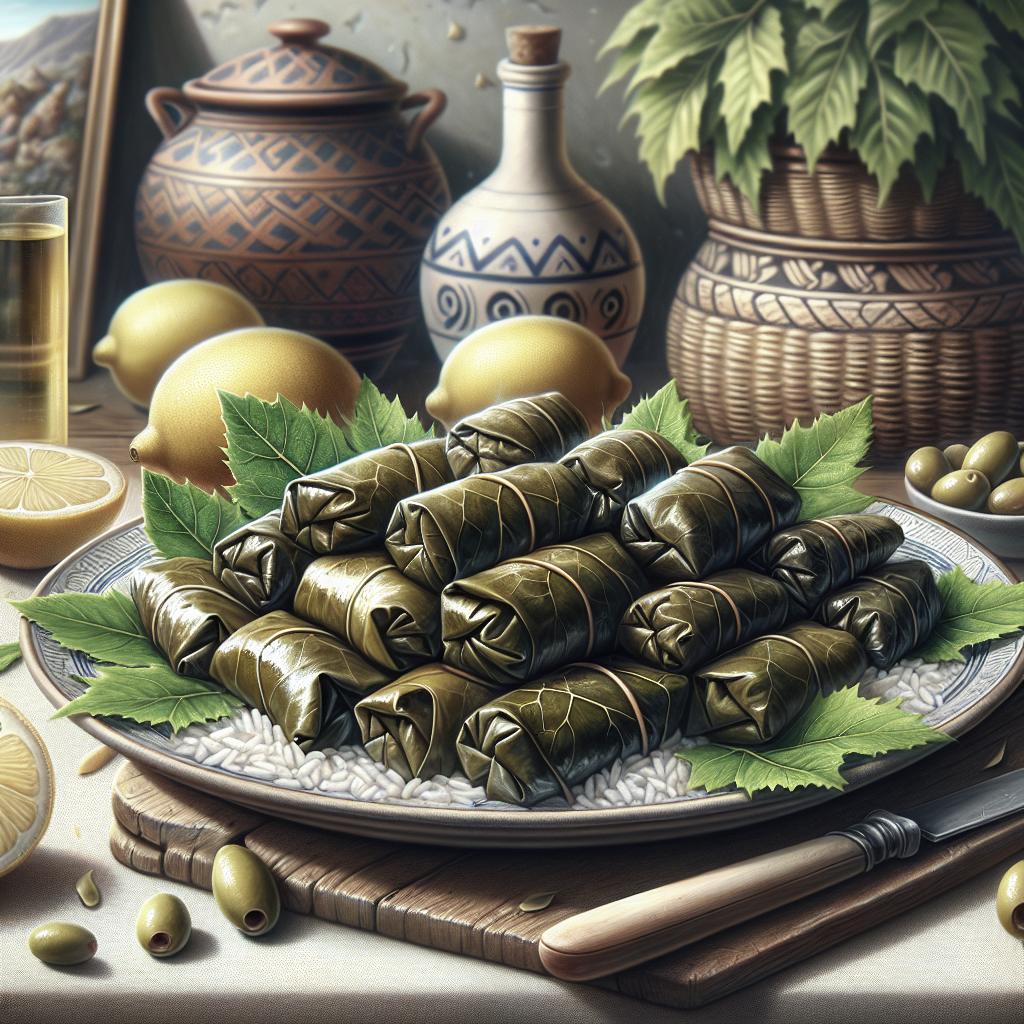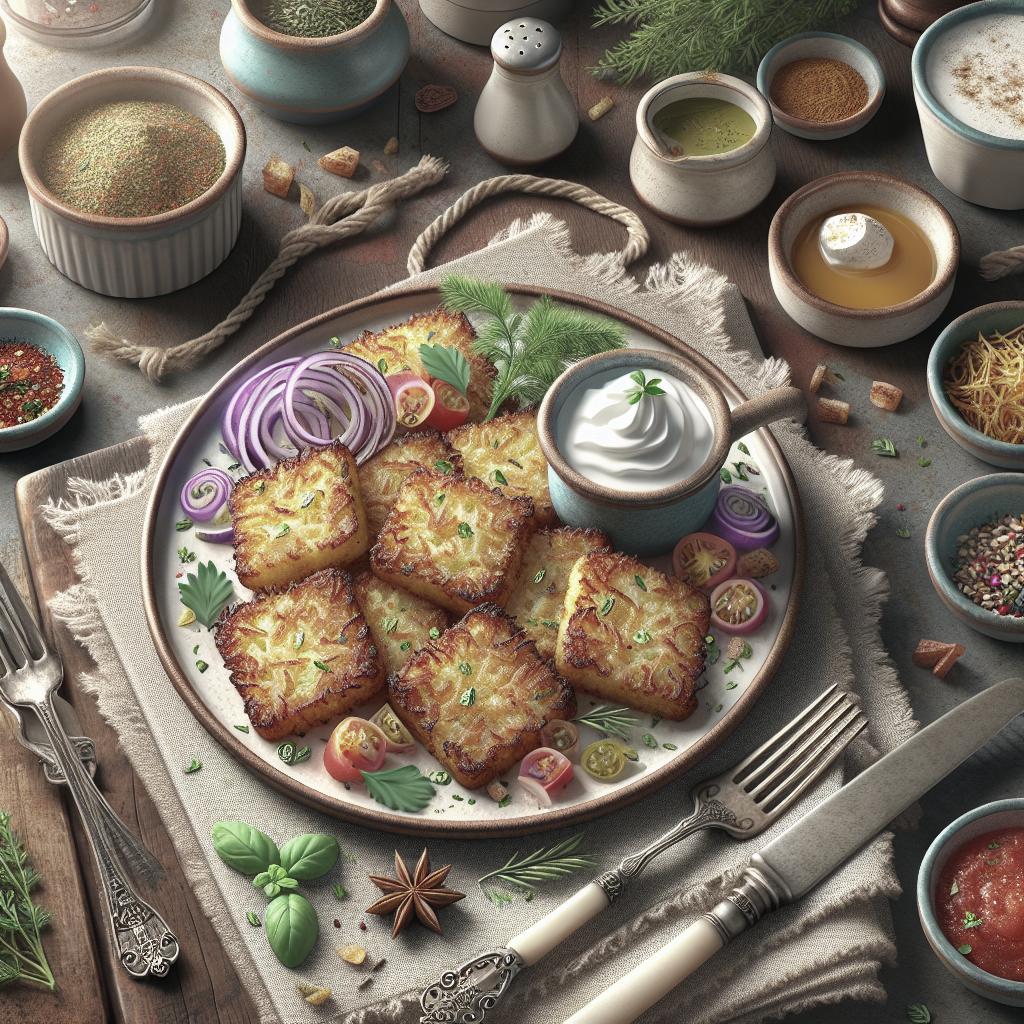Greek Stuffed Grape Leaves: A Delicious Journey into Dolmadakia
Greek stuffed grape leaves, also known as Dolmadakia, are a beloved culinary staple in Mediterranean cuisine. This traditional dish combines tender grape leaves with a savory filling of rice, fresh herbs, and spices, creating a delightful blend of flavors and textures. Whether you’re an experienced cook or a culinary beginner, this blog post will guide you through every step of making delicious Dolmadakia. From selecting the right grape leaves to perfecting your rice, our comprehensive guide will ensure you create an authentic dish that celebrates Greek culture and satisfies your taste buds. Explore a variety of recipe tips, serving suggestions, and common questions to enhance your cooking experience and deepen your appreciation for this timeless classic.
Why will I make these often?
Stuffed grape leaves, with their unique blend of flavors, have a way of captivating the palate, making them a frequent choice for home cooks and food enthusiasts alike. Their versatility as an appetizer, side dish, or even a main course makes them a staple in many kitchens. The subtlety of the grape leaves combined with the aromatic filling of rice and herbs is a refreshing addition to any meal, providing both complexity and simplicity in every bite.
Moreover, preparing these delectable rolls offers a deep sense of culinary accomplishment. The process of rolling and assembling the grape leaves can be meditative, encouraging mindfulness and creativity in cooking. For those who enjoy sharing meals with loved ones, Dolmadakia also make for a delightful communal eating experience, allowing everyone to enjoy the fruits of your labor. As you become more adept at making them, these stuffed grape leaves are sure to become a beloved recipe in your culinary repertoire.
What do I need to make stuffed grape leaves?
To create the perfect batch of Greek stuffed grape leaves, having the right ingredients and tools is essential. While each recipe might vary slightly, core components include grape leaves, rice, onions, fresh herbs like dill and mint, olive oil, and a hint of lemon juice for a supportive acidity. Depending on personal preference, you can also add ground meat, such as lamb or beef, to the mixture for a heartier version.
In addition to ingredients, basic kitchen tools like a large pot for cooking, a mixing bowl, and a sharp knife will facilitate the preparation. Many cooks find that utilizing a grape leaf roller, although not necessary, can significantly expedite the rolling process, yielding more uniform results. With these essentials at hand, you’re ready to embark on your journey to mastering Dolmadakia.
Can I use fresh grape leaves?
Absolutely! Fresh grape leaves can be used and offer a vibrant taste that many chefs prefer. Before using them, it’s important to blanch the leaves to soften them and make them more pliable for rolling. Submerging them briefly in boiling water and then transferring to an ice bath ensures the leaves remain vibrant green and manageable for assembly.
However, if fresh grape leaves aren’t readily available, jarred or canned versions make a suitable alternative. These are typically packed in brine, so it’s advisable to rinse them thoroughly before use to remove any excess salt. No matter your choice, ensuring that the grape leaves are tender and flexible is the key to achieving the right texture for your Dolmadakia.
Greek Stuffed Grape Leaves: Dolmadakia
Ingredients
The ingredient list for Dolmadakia is accessible and allows for personalization. You’ll need:
- 1 jar or about 60 fresh grape leaves
- 2 cups of long-grain rice
- 1 large onion, finely chopped
- 1/4 cup of chopped fresh dill
- 1/4 cup of chopped fresh mint
- 1 cup of extra virgin olive oil
- Juice of 2 lemons
- Salt and pepper to taste
- Optional: 1/2 pound ground lamb or beef
Instructions
The process begins with preparing the filling. In a bowl, mix together the rice, onions, herbs, olive oil, and lemon juice. Season with salt and pepper, and if using, incorporate the ground meat, ensuring it’s distributed evenly throughout the mixture.
Next, lay out a grape leaf, shiny side down, and place a spoonful of the filling near the stem end. Fold the sides over the filling and roll tightly, continuing until all the filling is used. Place the rolls seam-side down in a single layer in a pot.
Notes
For those experimenting for the first time, patience is key. Don’t worry if your initial rolls aren’t perfect; practice will hone your technique. Taste as you go to ensure the seasoning is to your liking, and remember that homemade variations are part of the charm.
Accompany your Dolmadakia with a dollop of Greek yogurt or a squeeze of fresh lemon juice to enhance the vibrant flavors and enjoy a true Mediterranean culinary experience.
Recommended Products
To enhance your cooking experience, consider these products:
- Grape leaf roller for ease and consistency
- High-quality olive oil to enrich the flavor
- A reliable chef’s knife for precise chopping
Can I make these ahead of time?
Yes, Dolmadakia are an excellent make-ahead dish. Prepare them a day in advance and store them in the refrigerator to allow the flavors to meld together beautifully. When ready to serve, gently reheat or enjoy them cold, which is equally delightful.
The ability to make these in advance not only saves time during meal preparation but also makes them a perfect option for gatherings or when hosting guests. Their taste improves as they sit, making them a practical and delicious choice for any occasion.
How do I cook the rice?
The rice shouldn’t be fully cooked when preparing the filling as it will continue cooking inside the grape leaves. Parboil the rice or sauté it in olive oil until lightly translucent, allowing it to absorb the flavors of the onions and herbs as it cooks further inside the grape leaves.
This way, it absorbs the flavors of the onions and herbs, melding with the essence of the grape leaves during the final steaming process. Achieving the right texture is vital, as overcooked rice can become mushy rather than retaining a slightly firm bite.
How do I prepare the grape leaves?
Fresh grape leaves need to be blanched briefly in boiling water, then shocked in an ice bath to prepare them for rolling. This process makes them pliable and easier to handle. For jarred leaves, a thorough rinse is crucial to eliminate excess salt from the brine.
Inspect each leaf for tears and handle with care to maintain their shape during the rolling process. Proper preparation of grape leaves is foundational, ensuring your Dolmadakia are aesthetically pleasing and hold together during cooking.
How do I make Greek stuffed grape leaves?
Once your filling is prepared and leaves are ready, it’s time to assemble. Place a spoonful of the filling, tuck the sides over, and roll upwards, keeping it snug yet not too tight to allow the rice to expand. Consistency in size ensures even cooking.
With patience and practice, the rolling process becomes easier, and your confidence in creating uniform Dolmadakia will grow. Take your time with this step, as it lays the foundation for a visually impressive and delicious dish.
How do I layer the rolls in the pot?
Line the bottom of your pot with a few grape leaves to prevent sticking and place the Dolmadakia tightly in a circular pattern, stacking layers if necessary. This arrangement ensures even cooking and helps them maintain their shape during the steaming process.
Opt for a pot size that comfortably accommodates your Dolmadakia without unnecessary gaps around the edges. Keeping the rolls snug prevents them from unraveling, ensuring they remain intact from pot to plate.
How do I keep the dolmades from opening while cooking?
A well-prepared grape leaf roll is less likely to open during cooking, but a few other techniques can secure them. Place an inverted plate over the rolls in the pot. This added weight keeps the Dolmadakia compressed and secure during steaming.
Additionally, maintaining a gentle simmer prevents vigorous bubbling that can disrupt the rolls. By controlling the cooking environment, your Dolmadakia will emerge as a beautifully intact, savory delight.
How long do I cook dolmades?
Cooking time varies slightly based on the size and filling. Typically, Dolmadakia should be steamed for about 45 minutes to an hour. Checking for tenderness in the grape leaves and ensuring the rice is fully cooked is a good indicator of doneness.
During cooking, it’s important to monitor the liquid level, adding water if necessary to maintain a steaming environment without risk of burning. The balance of timing and method makes the dish a culinary triumph.
How do I serve stuffed grape leaves?
Dolmadakia can be served warm or cold and make a delicious addition to any mezze platter, often highlighted with tzatziki or yogurt dips. Their refreshing flavors also pair well with grilled meats or fish, providing a delightful contrast.
When plated, a sprinkle of fresh herbs or a wedge of lemon can enhance their visual and flavor appeal. Each bite offers a glimpse into Greek culinary tradition, perfect for special occasions or everyday enjoyment.
More Stuffed Grape Leaf Recipes:
Expand your culinary horizons by exploring variations of stuffed grape leaves from different cultures. Middle Eastern variations often incorporate spices like cinnamon and allspice, while Turkish Sarma might include currants or pine nuts.
Experimenting with different fillings and styles broadens your appreciation of this dish’s adaptability. Whether sticking to traditional Greek flavors or venturing into international tastes, the possibilities for stuffed grape leaves are as diverse as they are delicious.
Watch the Video:
For a comprehensive visual guide, check out our step-by-step video on mastering Greek stuffed grape leaves. Visual learners will find this tutorial especially helpful in understanding the nuances of preparing and rolling Dolmadakia. Watch as we bring each instruction to life, making the entire cooking process approachable and enjoyable.
Our video not only illustrates the fundamentals but also shares helpful tips and tricks accumulated through years of practice. Whether you’re a novice or a seasoned cook, watching these techniques in action can inspire confidence in your culinary journey.
Final Thoughts
| Section | Summary |
|---|---|
| Why will I make these often? | Discusses the delightful flavor and communal nature of Dolmadakia that make them a frequent choice. |
| What do I need? | Outlines the essentials and tools required for preparing stuffed grape leaves. |
| Fresh grape leaves | Explores the option of using fresh versus canned grape leaves and preparation methods. |
| Ingredients & Instructions | Provides a detailed recipe, including ingredient list and step-by-step instructions. |
| Additional Tips | Covers notes, recommended products, and responses to common cooking queries. |


